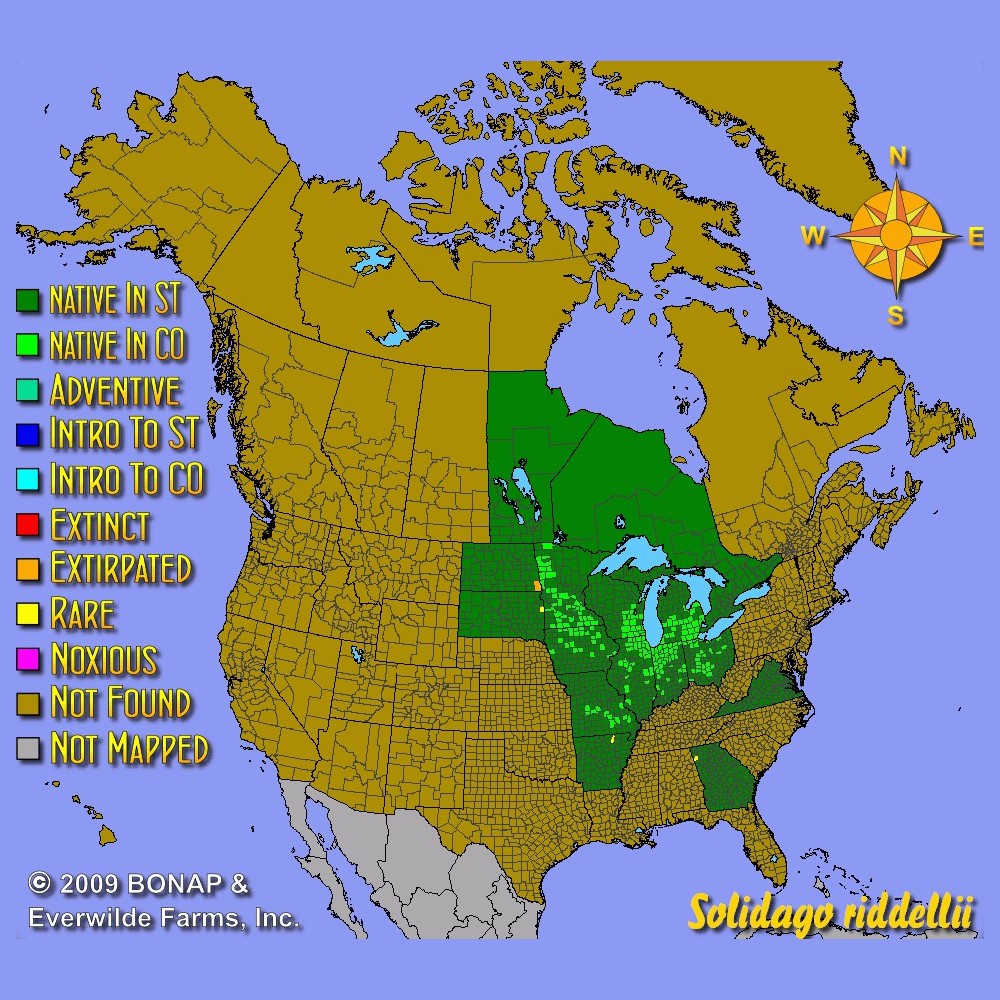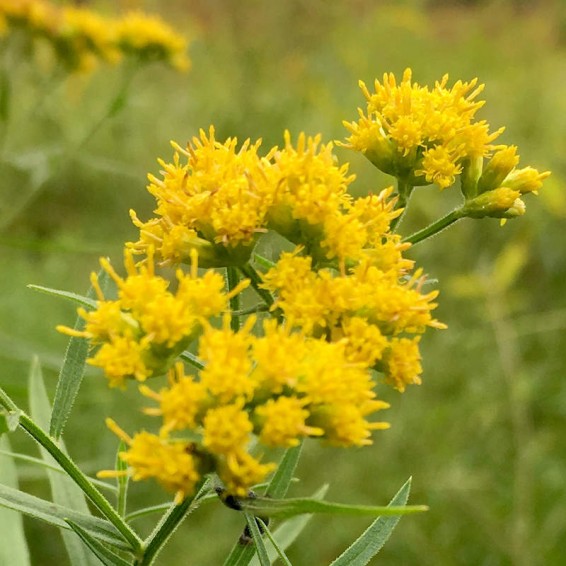Riddell's Goldenrod Seeds
Solidago riddellii
- HOW TO GROW
- FAST FACTS
HOW TO GROW
Sowing: Direct sow in late fall, pressing into the surface of the soil since this plant needs light to germinate. For spring planting, mix the seeds with moist sand and store in the refrigerator for 60 days before planting. Keep the soil lightly moist until germination.
Growing: Water seedlings occasionally until they become established. Mature plants prefer moist soil, though they do tolerate some drought. This plant attracts bees and butterflies. It will self-seed, though it does not usually become aggressive.
Harvesting: For cut flowers, choose stems with flowers that have just opened. Strip the foliage that will fall below the water level, and place in water immediately.
Seed Saving: As the blooming fades, the plumes will turn from yellow to white as they develop the seed. The seed can easily fly away on the wind because of its white fluff, and should be gathered as soon as possible. Strip the seed from the stems, and remove as much plant material as possible. Store the seed in a cool, dry place.
FAST FACTS
Latin Name: Solidago riddellii
Species Origin: US Native Wildflower
Type: Native Wildflowers
Life Cycle: Perennial
USDA Zones: 3, 4, 5, 6
US Regions: Midwest
Seeds per Ounce: 89,000
Stratification: Cold/Wet for 8 Weeks
Germination Ease: Stratify 8 Weeks
Sunlight: Full Sun
Height: 36 Inches
Color: Yellow
Bloom Season: Blooms Early Fall, Blooms Late Fall
Uses: Attracts Pollinators, Attracts Honeybees, Attracts Butterflies, Deer Resistant
DESCRIPTION

HOW TO GROW
Sowing: Direct sow in late fall, pressing into the surface of the soil since this plant needs light to germinate. For spring planting, mix the seeds with moist sand and store in the refrigerator for 60 days before planting. Keep the soil lightly moist until germination.
Growing: Water seedlings occasionally until they become established. Mature plants prefer moist soil, though they do tolerate some drought. This plant attracts bees and butterflies. It will self-seed, though it does not usually become aggressive.
Harvesting: For cut flowers, choose stems with flowers that have just opened. Strip the foliage that will fall below the water level, and place in water immediately.
Seed Saving: As the blooming fades, the plumes will turn from yellow to white as they develop the seed. The seed can easily fly away on the wind because of its white fluff, and should be gathered as soon as possible. Strip the seed from the stems, and remove as much plant material as possible. Store the seed in a cool, dry place.
FAST FACTS
Latin Name: Solidago riddellii
Species Origin: US Native Wildflower
Type: Native Wildflowers
Life Cycle: Perennial
USDA Zones: 3, 4, 5, 6
US Regions: Midwest
Seeds per Ounce: 89,000
Stratification: Cold/Wet for 8 Weeks
Germination Ease: Stratify 8 Weeks
Sunlight: Full Sun
Height: 36 Inches
Color: Yellow
Bloom Season: Blooms Early Fall, Blooms Late Fall
Uses: Attracts Pollinators, Attracts Honeybees, Attracts Butterflies, Deer Resistant




